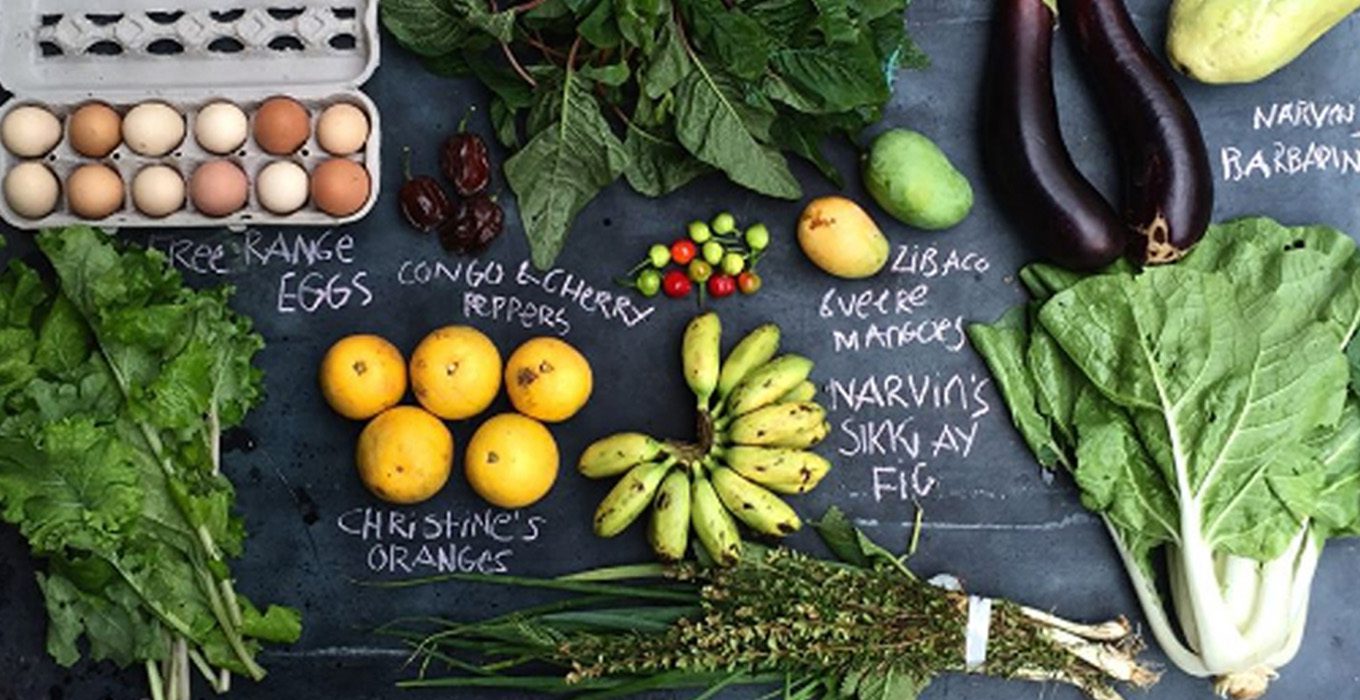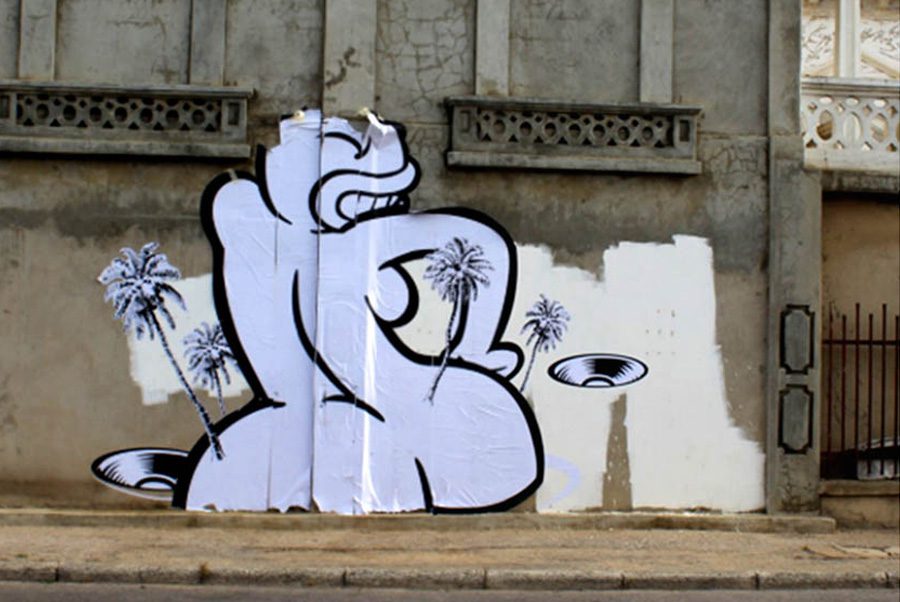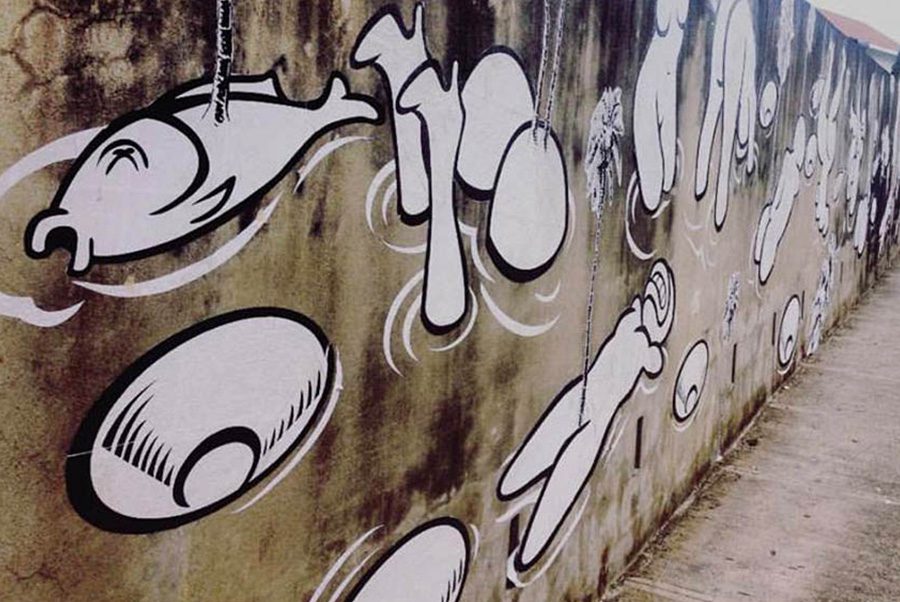

September 14, 2016
“I wanted to see if an architectural way of making could be developed that reflects the nature of Trinidad Carnival.”
The culture, the rhythm, the people, the accents and even the language… Across the Caribbean, no two are the same. And how we experience these unique variables differs even more as a result of our backgrounds, environments and even our genes.
We are not the same and the beauty of our difference becomes even more evident in our creativity, as we explore different disciplines and interact with the products of our creativity, hung on walls, draped on bodies, printed or published.
Leasho Johnson is not your average graphic designer, nor is he your average artist. He’s a refreshing mix of the two. Experimenting with both of these disciplines that sometimes overlap, flow together and influence each other and at other times, are very contrasting, with different aims, purposes, processes and practices.
We spoke with Leasho about being groomed to become an artist by his father, how a variety of disciplines influenced his work and how he navigates the world as a designer and an artist from Jamaica.
It’s a really interesting conversation about creativity, art, design, culture, identity, masculinity and Caribbean-ness, from the point of view of a young Jamaican creative.
So I did a bit of research and came across some of your earlier paintings, which I thought were very cool… but what I was mostly drawn to were the pieces that were more showing your mix of disciplines as a graphic designer and an artist. I know that you went to Edna Manley and I know that your dad influenced a lot of your early creative career choices… Can you tell me a little bit about that?
LEASHO: Yea, my dad taught me everything! I kinda grew up painting and what he really taught me was discipline. Like when I left school, he didn’t want me to take a regular job because he told me I needed to produce at least six paintings every day…
He made me practice water colours the most because he said that was the hardest medium to master. I watched and copied a lot of his techniques over the years growing up at home in his studio. The stenciling technique I use now is from watching him make signs and apply graphics to surfaces by hand.
He always knew I would end up going to Edna Manley but he didn’t insist on any particular discipline because he believed I would excel in whatever area I chose.
But I didn’t want to be a painter. I didn’t think that painting was a secure way of making a living, so I decided to study graphic design instead. Halfway through graphic design, I felt that there were too many restrictions… I even tried painting my graphics and discovered that I really loved illustrating. So Illustrations became my thing.
Did you learn to create objects at school as well?
LEASHO: Yes, I tried a lot of elements in school! And I was good at three-dimensional works, just because of the exposure with my father. He passed us through all of that: illustration, drawing, painting, and sculpting. But when I went to school, there were all these separate departments… Why are there so many departments? I really loved ceramics but I just did everything! Then I took this drawing class run by a painting teacher – Rozie Chung. I started to like painting because she gave us a lot of freedom for exploration but I was still unsure if it was the path for me…
How did your dad feel about your work and your direction?
LEASHO: I’m still not quite sure! My work involves cartoons and, for him, cartoons represent immaturity. He still wonders why, at my age, I watch cartoons. He’s very proud of my achievements as an artist and he’s super supportive but he has yet to experience my work in person… I’ll make that happen soon though
Even with that kind of encouragement to pursue Art, you still went and got a traditional job after graduating. What led you to that?
LEASHO: It was a plan: a plan to be financially stable so I could paint and be an artist.
I think, as a painter, one of the things you wish for is a fairy-grandmother so you can just paint and not ever have to do anything else! But that’s not real life, so I got a job as a Graphic Designer so that I could paint and create the kind of work I wanted to create. I didn’t have to please anybody but myself; I could take my time and develop.
I often think of being an artist as so terrifying — with success seemingly left up to opinions and chance.
LEASHO: Is it really terrifying, though? That’s my question.
Right now, there are so many opportunities but it’s all about what you know.
Being a graphic designer was safe and it gave me the time and the financing that I needed. It also made transactions easier, like renting an apartment or acquiring a loan. I think most of the general population understands what graphic designers do
Or think they do.
LEASHO: True.
There’s a beauty of being exposed to several disciplines the way you got to at Edna Manley: getting to explore, play with and figure out what kind of creative you want to be and what you want to say with your work.
LEASHO: But it’s only as special as what you take out of it… The school gives you all these courses: but it depends on what you do with them. There are people who’ve never gotten anything out of it so it all depends on what you want and how you use the opportunity.
A lot of designers have this tendency to think of design as art, but it’s not exactly the same… Do you think that working in the agency affected the way you work as an artist? Do you refer to yourself as an artist or as designer?
LEASHO: I see myself as more of an artist but I think the title ‘designer’ has more acknowledgment here in Jamaica.
Like when I go to a place to rent an apartment I say I’m a designer and they think ‘That’s good, he works.’ But most of the times that I’ve travelled and see the world, it’s not because I’m a graphic designer: it’s because I’m an artist.
My approach to creating art is somewhat ‘designed’ in a way. Designing is a part of who I am as an artist and it’s part of how I think.
I’m starting not to care so much anymore though. I’m an artist and that’s how I’d like to live for the rest of my life. I’m slowly transitioning: taking off the graphic designer skin and, eventually, I’ll be a full time artist. But graphic design has definitely taught me time management and a lot of other important disciplines.
Is that also because of your dad and how he groomed you?
LEASHO: No, my father is quite a free thinker, and not so organized. I naturally have a strong sense of organization – I guess that comes with having free spirited parents. I’m always trying to keep things organized in a particular way and I’m very efficient. What I’ve learnt through design is communication: writing emails, communicating with people, presenting deadlines and having good ideas, stuff like that.
Cool. Could you tell us a bit more about your creative process then?
LEASHO: Right now, I think about how something is in the space and focus on a kind of disturbance. Like with these recent pieces, I’m working with historic themes so I was thinking about our colonial history and what powers gave the space its identity. Then I also think about the opposing element, like Dancehall.
How has your experience with dancehall affected your work?
LEASHO: I used it as a critique of myself because, growing up with dancehall, I listened to it but it never taught me anything. Or, everything that it taught about masculinity and stuff like that, I was opposed to… I didn’t think it had anything to do with me, but all of my friends knew the songs, they listened to it and it worked for them: they loved it.
It wasn’t until I left country and started Art School (Edna) in Kingston that the culture shock hit: there were a lot of students who didn’t like danchall, they listened more rock and alternative or EDM. I was more astonished with how dismissive they were of dancehall. No one I knew thought that part of the culture mattered and they seemed very detached. I really hated that and I started to think that I needed to represent Jamaica in a way that made sense to me and in a way that it was never represented.
I wanted to visually represent Jamaica in a way that was almost opposite to the way some people see dancehall or Jamaica, but still use familiar elements. I always considered Jamaican art to be very rough and organic so I started using clean, sharp lines, minimal spaces and a personal illustration style began to develop.
Your work is a critique on Jamaican culture. Was it also a critique of your-self?
LEASHO: Yes, it was and it slowly transformed me – I mean, I’ve always liked some parts of dancehall, and it has always been a part of me. It is very expressive and that was the part I liked. As I did more work, I realized that part, the expressive part, was more African but still Jamaican. It’s the highly spiritual part that plays a major role the black identity because of the way we dance and exaggerate our sexuality.
When I did the ‘Super plus Under Forty’ installation at the Mutual Life Gallery in Jamaica, “Church is in Session,” it revealed the direction that I needed to take. It was about Jamaican contradictions: the conservative versus the raw and ‘downtown’. I realized it’s two sides of the same coin.
Your work has a real tongue and cheek kind of approach to story-telling.
LEASHO: I like to focus on the humorous part because it gives me comfort and it’s more palatable, even though it’s about homosexuality and stuff like that. The fact is that the humour makes it easier and more approachable. My work deals with serious issues but you can laugh first – at the cartoons, at the vice – which makes it more digestible.
Which is what I love about your work: that whole juxtaposition of seriousness and playfulness. Even if you don’t get it at first glance, you can tell that there is something under the surface there. When I look at your work I see a designer. Not so much because of the clean lines, but because I’m seeing messages communicated so clearly in those visuals.
LEASHO: Right now I’m working on a solo show. But while I’m doing that – since I’ve been doing that all year! – I’m also preparing for my three month residency at Residency Unlimited in New York. I applied for the Davidoff Initiative when I got back from Aruba last year and was accepted this year so I’ll be there from September to November. There are some other things happening but you’ll just have to wait and see!
(top illustration, installation: ‘Promise Land’ -photo by: Jodi Minnis, below: ‘Land of Big and Water’ – Looking at sexual identity and streotypes that are influenced by colonial displacement.)
See more of Leasho’s work here: leasho.com



INTERVIEWER: TANYA MARIE